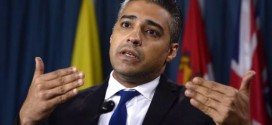The world was introduced to the concept of 3-D printing –a three-dimensional and functional object printed out of a machine. We thought we had come a really long way from Gutenberg’s Printer.
And, as a true testament to humanity’s mental evolution, we now have 3-d printing of human tissues. Enter the world of bioprinting. Testing new drugs and growing parts of organs is the next step from printing houses and automobiles.
Aspect Biosystems is a Vancouver startup that prints human tissues on demand. Using 3-D printing they combine cells and suspend them in hydrogel in a liquid form. Just like a plastic filament is fed into a 3D printer, the liquid is passed through. The human tissue – living and functional – is modeled layer by layer.
Konrad Walus is a professor at the department of electrical and computer engineering at UBC. His collaboration with his research group has occupied eight years of his life in the development of systems for bioprinting.
“We have developed very innovative and differentiated bioprinting. We are using 3-D printing techniques but we can do 3-D printing of living structures.” said Walus.
The tissue is stiff when printed but after a treatment in the incubator it cultures; biological functions are then fully developed due time. Once printed, the cells take over and perform their tasks.
Tamer Mohamed, Simon Beyer and Sam Wadsworth are the co-founders of this year old company.
“Our business strategy is to work up from the lower-hanging fruit and definitely the drug development market is the best and most strategic opportunity for us in the short term,” Walus said.“In the future if everything worked out splendidly, one could imagine making replacement organs.”
Drug testing on human tissue is more effective than animal testing. Aspects first tests consist of analyzing drugs for airway fibrosis; it induces an uncontrolled scarring of the lungs.
“Patients with airway fibrosis have an expected lifetime of only five years without a transplant,” Walus said. “There are really no known cures for it.”
“Interestingly, there are over 100 cures for airway fibrosis in a mouse. It is easy to get a false positive doing a mouse study. This is exactly where an animal model fails to predict the human response.” he added.
 العربي الديمقراطي The Latest From The Arab World
العربي الديمقراطي The Latest From The Arab World





